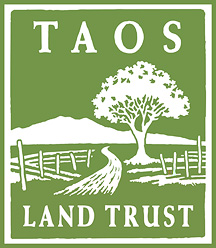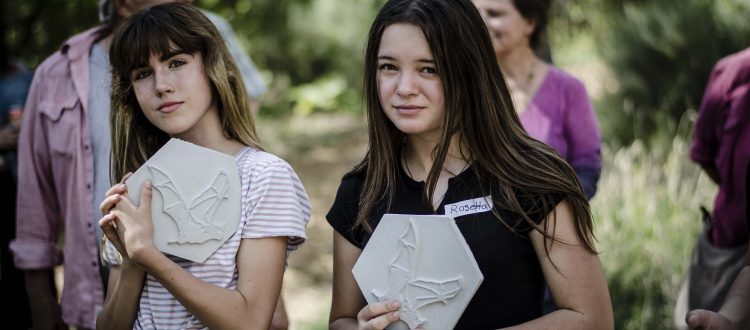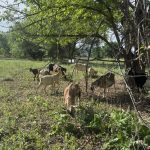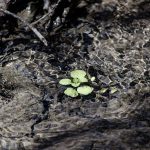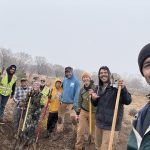Public Art Opening at Rio Fernando Park – September 22, 2019
We know, we know. Since last spring we’ve been teasing you with hints about a landscape art project here at Rio Fernando Park known as the “Pollinator Concentrator”. And you know full well by now about our pollinator obsession. Well, after a summer of hard work to bring this project to life it is time to show it off!
So how about you come on down to Rio Fernando Park on Sunday September 22nd from 5-8pm for the public opening of the Pollinator Concentrator! There will be food, speakers, really cool and interesting people (like the TLT staff ….for example) and of course POLLINATORS!
Pollinator Concentrator Public Art Opening
September 22, 2019 – 5-8pm
Rio Fernando Park, Taos, New Mexico
410 La Posta Road
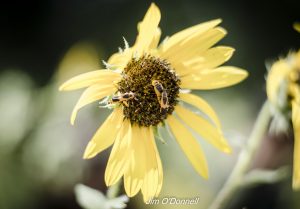
The Pollinator Concentrator is an ecological art project and dialogue between BIOSTEAM Lab artist-in-residence is Ana MacArthur and an entomologist responding to the biological crisis of pollinator loss and the role of pollinators in the Rio Grande Watershed and the students of the Taos Integrated School of the Arts, otherwise known as TISA.
Read more about the BIOSTEAM LAB here.
MacArthur’s inter-species, installation was made just for Rio Fernando Park. The piece employs a large, parabolic concentrator as a surface for tiles depicting pollinators as a metaphor for both “focusing” on diversity/loss and broadcasting this DNA into far away distances as would a satellite dish. The tile images function as a “book” for educational and conservation expansion by any visitor viewing the work. After sunset during opening and on specific evenings, a UV lighting element within the dish will be activated to attract pollinators from around the park. Around the periphery of the structure, our YCC crew, guided by the masters from the Taos Native Plant Society planted a wide variety of native flowering species that will both attract and benefit from the pollinators
(special thank you to Dominic Riolo for helping to bring this project to fruition!)
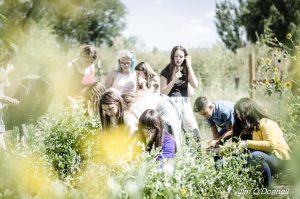
One of the very awesome parts of this project is the involvement of the 7th grade class from TISA (6th grade when the project started!). Artists MacArthur and Agnes Chavez from the BIOSTEAM Lab worked with the 7th graders to learn about the benefits of pollinators, the dangers pollinators face and how we can use biomimicry to be more responsible members of our planet. The students also learned how to make and paint alginated mold tiles which is part of the art installation. TISA Arts Coordinator, Megan Avina Bowers, implemented the BIOSTEAM Lab Activity with the younger grades for school wide integration. Students made pollinator solitary bee housing and through this process learned about the geometry of hexagons as they appear in pollinator designs and throughout nature. Megan and the kids invented a technique to use recycled magazines and glue to create the tubes instead of using straws.
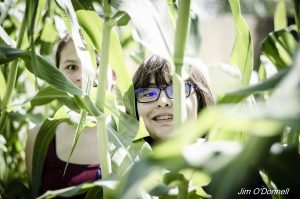
Last week, the 7th grade class and TISA teachers joined us at Rio Fernando Park to celebrate their work and to join in the completion of the project.
Offering Rio Fernando Park as a outdoor ecological learning laboratory for the students of Taos and northern New Mexico is one of our main goals with this piece of land and we are very thankful both to the students of TISA and the administration for helping to make this happen.
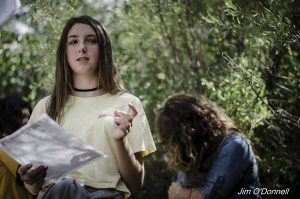
Species in Peril Along the Rio Grande
The Pollinator Concentrator is part of a ground-breaking regional art exhibition entitled “Species in Peril Along the Rio Grande”.
“Species in Peril Along the Rio Grande” is an exhibition and regional collaboration that features artworks and public programs responding to the biological crisis we’ve gotten ourselves into, and exploring how the great river that makes our New Mexico connects us across borders and disciplines in the Rio Grande watershed.
The state-wide exhibition is centered in Albuquerque at 516 ARTS – subtitled “Contemporary Artists Respond” – and features commissioned and existing artworks that examine regional flora and fauna and raise ethical and cultural questions about human impact on the natural world. The exhibition is co-curated by Josie Lopez, PhD, Curator of Art, Albuquerque Museum, and Subhankar Banerjee, Lannan Chair and Professor of Art & Ecology, UNM. Developed in partnership with the Art & Ecology Program at the University of New Mexico (UNM), this expansive collaboration explores how the river connects us across borders and disciplines
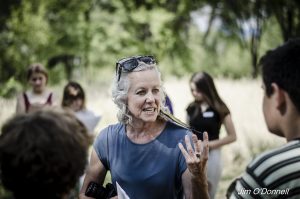
BIOSTEAM Lab artist-in-residence Ana MacArthur
Check out the full Species in Peril program guide to the season-long, regional collaboration here.
Finally, keep an eye on #speciesinperilalongtheriogrande on social media (particularly Instagram) for more information on all the New Mexico-wide events.
##
